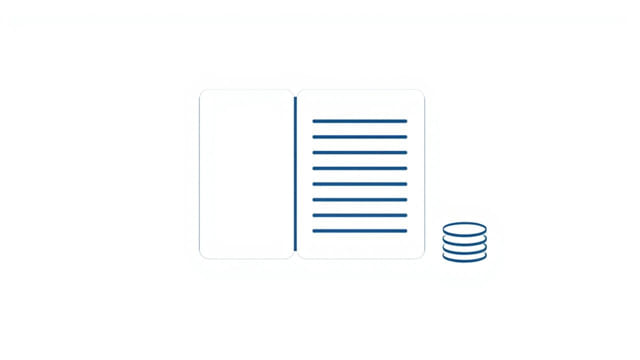Managing financial records is a key responsibility in any business, regardless of size. One of the essential tools used in accounting is the cash disbursement journal. This journal helps companies keep track of all cash payments made over a period of time. It includes information such as payment dates, amounts, purposes, and the accounts affected. Understanding how to use and interpret a cash disbursement journal is crucial for maintaining transparency and control over outgoing funds. This topic explains the structure of a cash disbursement journal, gives examples, and explores its uses in practical business settings.
Understanding the Cash Disbursement Journal
The cash disbursement journal, also known as the cash payments journal, is a specialized accounting ledger used to record all payments made by cash, check, or electronic fund transfer. It is different from a general journal because it focuses only on cash outflows. Businesses use this journal to document transactions such as paying vendors, settling utility bills, or reimbursing employees.
Why Use a Cash Disbursement Journal?
There are several benefits to using a cash disbursement journal:
- Organization: It helps organize outgoing payments in a clear and structured format.
- Accuracy: Reduces the risk of missing or double-counting payments.
- Audit Trail: Provides documentation for internal audits or external reviews.
- Efficiency: Saves time when reconciling accounts and preparing financial statements.
Components of a Cash Disbursement Journal
A well-maintained cash disbursement journal typically includes the following columns:
- Date: The date the payment was made.
- Check Number or Reference: Identifies the payment method (e.g., check number or EFT confirmation).
- Payee: The person or company receiving the payment.
- Description: A brief explanation of the purpose of the payment.
- Account Debited: The account affected by the transaction (e.g., Rent Expense, Supplies).
- Amount: The amount of money paid.
Some journals also include a column for discounts received or taxes paid, depending on the needs of the business.
Cash Disbursement Journal Example
Here’s a simplified example of a cash disbursement journal for a small business in one week:
| Date | Check No. | Payee | Description | Account Debited | Amount |
|---|---|---|---|---|---|
| July 1 | 101 | ABC Supplies Co. | Office Supplies | Office Supplies Expense | $250.00 |
| July 3 | 102 | XYZ Rentals | Monthly Rent | Rent Expense | $1,200.00 |
| July 4 | 103 | John Doe | Employee Reimbursement | Miscellaneous Expense | $75.00 |
| July 5 | 104 | Electric Co. | Utility Bill | Utilities Expense | $300.00 |
This table shows how payments are tracked clearly. Each transaction is documented, making it easy to trace and explain any entry during financial analysis or audits.
Posting to the General Ledger
After recording transactions in the cash disbursement journal, the amounts must be transferred, or posted, to the general ledger. The general ledger contains all the business’s financial accounts. Each expense category, such as ‘Utilities Expense’ or ‘Rent Expense,’ will be updated to reflect the total paid over a period.
For example, from the sample journal above:
- Office Supplies Expense: +$250.00
- Rent Expense: +$1,200.00
- Miscellaneous Expense: +$75.00
- Utilities Expense: +$300.00
The cash account in the general ledger will be credited with the total disbursements: $1,825.00.
Common Transactions Recorded in the Cash Disbursement Journal
Here are examples of routine payments often recorded in the journal:
- Payment to vendors for goods or services
- Employee reimbursements
- Utility and internet bills
- Rent or lease payments
- Charitable donations
- Loan repayments
- Insurance premium payments
These types of transactions reflect the cash outflow activities that impact business operations directly.
Tips for Maintaining an Accurate Cash Disbursement Journal
Accuracy is key in bookkeeping. Here are some practices that help keep your cash disbursement journal reliable and useful:
- Record transactions daily to avoid backlogs and errors.
- Use consistent descriptions for similar expenses.
- Double-check amounts and account codes before posting.
- Attach receipts or invoices to journal entries for reference.
- Review the journal regularly to catch and correct mistakes early.
Cash Disbursement Journal vs. Other Journals
In accounting, several types of journals exist, each serving a unique purpose. It’s important to distinguish between them:
- Cash Receipts Journal: Used to record all incoming cash or checks, such as customer payments.
- General Journal: Used for infrequent or adjusting transactions not recorded in other journals.
- Sales Journal: Records credit sales of goods or services.
- Purchases Journal: Used for credit purchases of inventory or supplies.
Unlike these, the cash disbursement journal focuses solely on outgoing payments. It helps isolate expenses from other transactions, making it easier to track business spending habits.
Digital vs. Manual Cash Disbursement Journals
Today, many businesses use accounting software like QuickBooks, Xero, or FreshBooks to manage journals. These platforms automate entries and reduce errors, but the underlying structure remains the same. A manual journal, created in spreadsheets or on paper, is still widely used by smaller businesses or for specific reporting needs.
Whether manual or digital, consistency and accuracy are what make the cash disbursement journal valuable.
The cash disbursement journal is an essential record in the accounting process that helps businesses track where their money goes. By organizing payments in a systematic and readable format, it supports better decision-making, strengthens internal control, and simplifies tax preparation. With clear entries that detail dates, amounts, and purposes, the journal also serves as an effective audit trail. Whether managed digitally or manually, mastering this tool is a key step in maintaining financial transparency and long-term business health.
